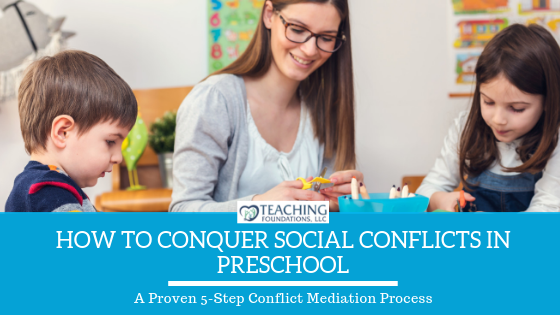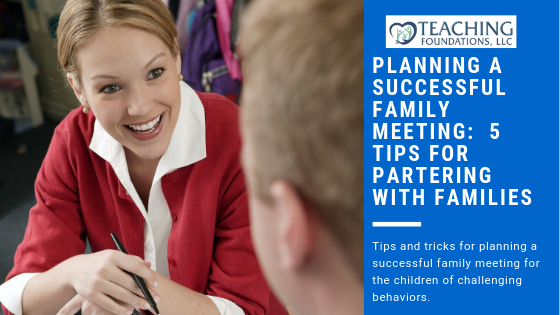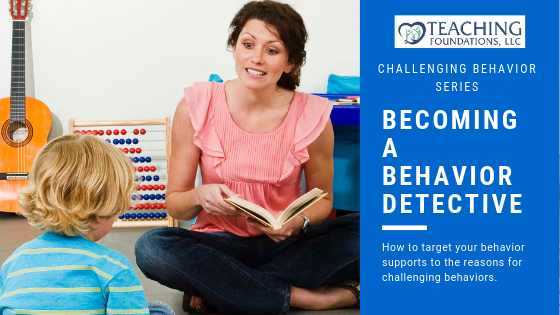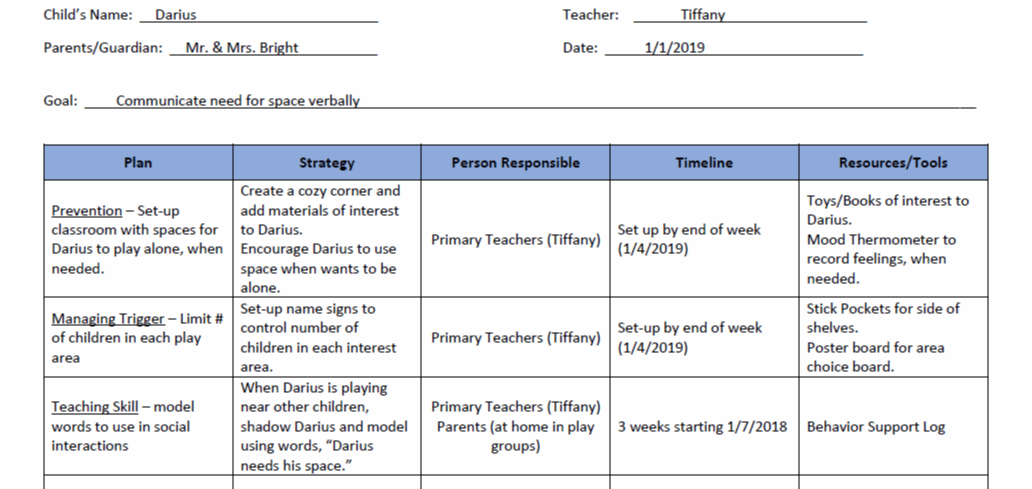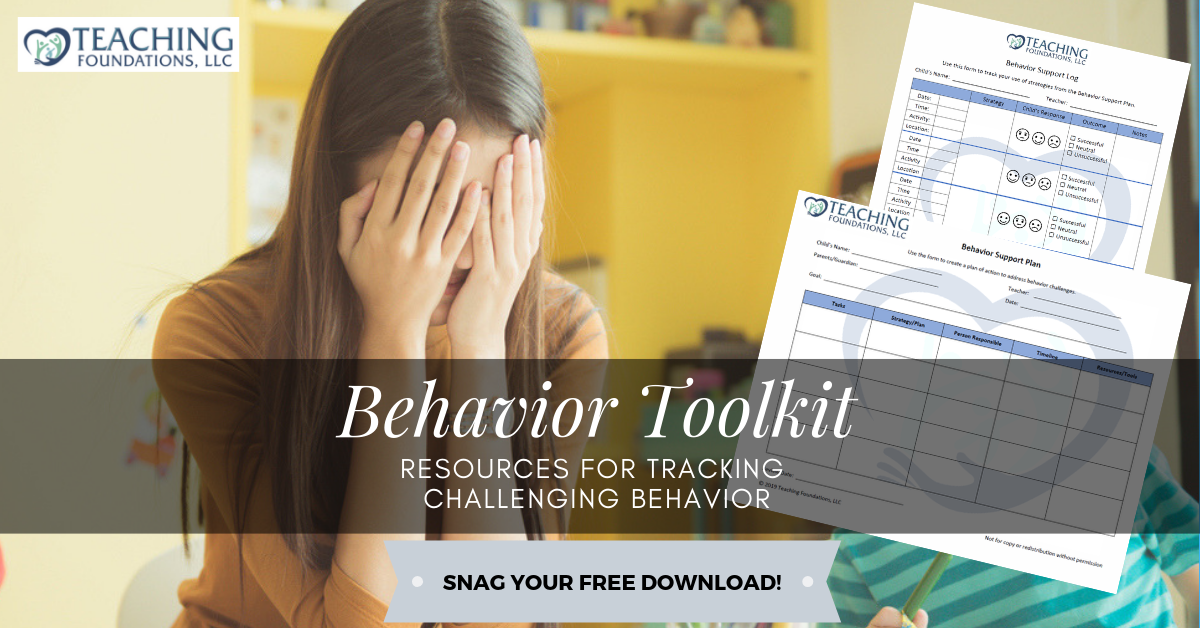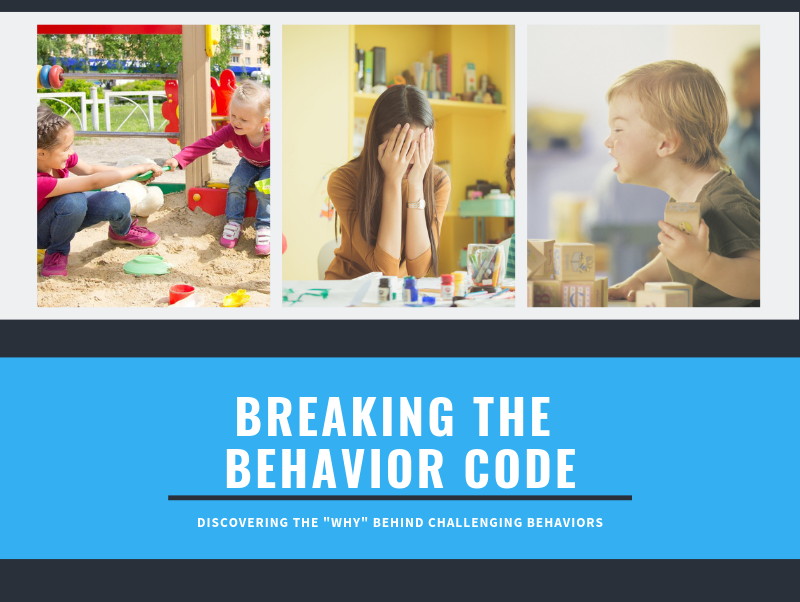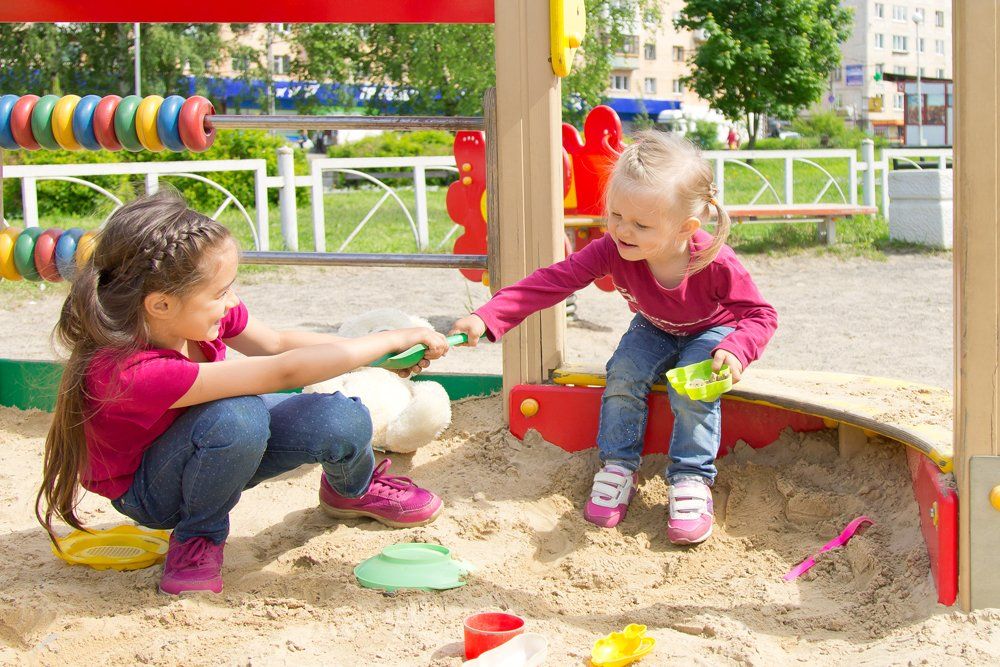Planning a Successful Family Meeting
5 Tips for Partnering with the Families of Children with Challenging Behaviors in Preschool
A necessary step when working with children with challenging behaviors is meeting with the family to discuss the behavior and create a plan of action to address the challenging behavior. For any teacher, no matter how long you have been in the early education field, meeting with families can be intimidating. I know that I still become nervous before a meeting with families. This is mostly because I do not know how they will react to the information I am about to share with them. Sure, I’ve discussed the details of specific events during conversations at drop-off and pick-up, but a meeting is different, right? In this post, I am going to share with you the 5-steps I take to prepare for a successful meeting with the parents of children with challenging behaviors. These 5-steps include (1) Preparing for the meeting, (2) Beginning the meeting, (3) Exchanging Information, (4) Creating a Behavior Support Plan together, and (5) Following up with Families.
1. Preparing for the Meeting
Before you meet with the family, you will need to gather all your documentation of the challenging behavior. This documentation is important because it helps you demonstrate to the parents the severity of the challenging behavior and the need for assistance and support. If you haven’t been tracking the behavior, I provide strategies and tools for doing this in my articles the 5-Step Process for Managing Challenging Behaviors and Becoming a Behavior Detective. While you are tracking the behavior, you can start building a relationship with the family by sharing information about the child’s day with them. This information should include both details about how the child is being successful in your classroom, as well as, details about challenging behaviors you are observing. By starting this communication in your daily interactions with the family, you ensure that parents are not blindsided by the information gathered and shared in the meeting.
Tools that I like to gather and share with families during the meeting include anecdotal records of specific behavior incidents I want to discuss, as well, as frequency charts to show how often the behavior is occurring. Both tools are available in our free Resource Library. Join our Behavior Detective Squad to gain access to this invaluable library! The information gathered using these tools is important because you want to convey the necessity for a support plan to families by demonstrating how severe the behavior is. You can eliminate the feeling that you are making a big deal out of small things by clearly detailing for the parents what is happening in the classroom, the contexts in which it is happening, and how often it is occurring.
The last thing I do before the meeting is reflect on the data collected and identify potential reasons for why the behavior is occurring. I also list possible needs the child has which should to be included in future behavior support plans. To learn more about the needs behind challenging behaviors, click here. By reflecting on this information, I am prepared to share it with families during the meeting. I can also bring possible tools and strategies to the meeting to share with families. By sharing these tools and resources in the meeting, I can explain to parents how they will be used in the classroom and encourage the families to continue the child’s learning at home by using the same strategies and tools.
Now that I’ve gathered all the documentation, resources, and tools, the next step is to begin the meeting.
2. Beginning the Meeting
When starting the meeting, it is important to establish a sense of trust and comfort with the family. If parents know you are discussing behavior challenges, there may be defensiveness in the air. This can be cleared by starting the meeting with casual conversation. I will often ask the parents how they are doing and share strengths about their child. The goal behind this is to initiate the back-and-forth exchange with families that is necessary to find solutions to challenges we are experiencing. Most parents want what is best for their child. If you can communicate to the parents that you know their child and are invested in the child’s learning and growth, you will find willing partners in the journey of behavior management.
When starting the meeting, it’s important to consider your body language. When communicating with families, your body language will communicate 55% of the message. Your words will only communicate 7% of the message. This means that “how” you communicate the information is more powerful than “what” you say when delivering the message to families. Body language is what the speaker looks like while delivering a message, including posture, facial expressions, movements, etc. You want to ensure that you are smiling, leaning into the conversation, and have an open body position, including open arms. This communicates to families that you are here to listen to them and you are not here to blame them for their child’s behavior.
It’s also important to explain the purpose for the meeting in the beginning. This sets the direction for the meeting and ensures that everyone is on the same page going forward. I usually say, “We are here to help Timothy be successful in our classroom. Timothy has an outgoing and engaging personality. He enjoys spending time playing with others in our class. We are having challenges with Timothy controlling his emotions when others do not agree with him. We would like your help in finding possible solutions to this challenge.” By stating the behavior challenge in this way, you get everyone focused on finding solutions to the behavior challenge and discussing goals for the child’s growth and learning.
3. Exchanging Information
Now that everyone is focused on finding a solution to the challenging behavior, the next step is to start exchanging information with the families. There are two goals during this phase: (1) communicating the severity of the behavior to the family and (2) getting information from the family that helps put the behavior in context. When sharing information with the family, it’s important to use objective language that specifically describes what is happening. “Timothy is climbing on the shelves during transitions” as opposed to “Timothy is never on task”. With the first description, it clearly describes what is happening and helps the parents compare your observations to their experiences at home. Objective language also eliminates families becoming defensive because you are leaving out your personal interpretations and providing the family with an opportunity to share their perspective during the meeting.
While exchanging information, I will bring out the documentation collected, specifically anecdotal records and frequency charts, to share with the families. I will also include information previously shared during conversations during daily drop-off or pick-up. I ask the family open-ended questions to gain insight into their experiences at home. If they are experiencing similar behaviors at home, I will ask them what strategies they use to manage the behavior and the results of the strategies. If the family is not experiencing the challenging behavior at home, I will ask them how they manage the triggers we notice at school. How they answer these questions will suggest strategies for us to try at school.
I will also ask families during the meeting about any changes occurring at home. This information is especially important if a child’s behavior is suddenly spiking. I have found by asking these questions that I find reasons for the behavior that are unrelated to my classroom routines and schedules. For example, the family is going through a divorce and the child's sense of security has been diminished. I now know I need to provide him with more consistent routines and announcements of changes to help him feel secure and safe in the classroom environment. I might also need to explain teacher absences or upcoming vacations to help him understand that the teacher will be back and when. Knowing what is happening in the child’s home life can help you plan supports for the child to meet their individual needs while at school.
4. Creating a Behavior Support Plan Together
Remember, the reason for meeting with the parents of children with challenging behaviors is to discuss what is happening in the classroom in depth and to create a plan to address the behavior. After you and the parents have exchanged the information needed to put the challenging behavior into its appropriate context, you need to create a plan to address it together. The best behavior support plans require participation from everyone (parents, administrators, teachers, community resources, etc.). The meeting becomes the first opportunity for everyone to team up to manage the behavior together. As a team, everyone agrees on a learning goal for the child’s behavior and suggests strategies and resources for supporting the child in meeting the stated goals. For information on the specific details to include in a behavior support plan, check out this article. You can also sign-up to take our online course which walks you through our 5-step process for managing challenging behaviors, including tracking behavior, communicating with families, and creating behavior support plans by clicking here.
In Step One, I mentioned creating a list of possible needs and supports for managing the challenging behavior based on your observations. During this phase of the meeting, you will share these strategies with the families. It is recommended to have any tools you will be using available for families to see and share how they are used to guide the behavior. The more a family knows about the tool and how to use it, the more likely they are to try the tool at home. I also have the contact information of any community resources or referrals available for the family should they ask for them during the meeting. You want this meeting to have the feeling of being supportive of both the family and the child, as opposed to telling the family what they “should” do.
One way I get families involved in this phase of the meeting is by asking them for suggestion or strategies they do at home. I actively listen to the parents input by clarifying anything they say, “So you give Timothy a squeeze toy and have him take deep breaths at home when you see him stiffening his body while playing with his brother.” The more the family sees that you are interested in not only hearing their suggestions, but also including them in the plans, the more information and strategies you will get from the family.
At the end of the meeting, the plan created should be reviewed to ensure everyone understands and agrees with the strategies. Any strategies included in the plan should be listed as actionable steps that clearly tell everyone what will happen, when it will happen, and who is responsible for implementing the plan. A date to review the plan in the future should also be set at this time. This ensures that everyone gets back together to discuss the plans successes and challenges in a timely manner. Waiting to set the date later only prolongs the review process and delays making needed adjustments to the plan.
5. Following up with the Family
After the meeting, it is important to write up the behavior support plan and give a copy to the families for their records. Additionally, any resources requested and not provided in the meeting should be gathered and shared with families as soon as possible. The sooner this information is provided to families, the more likely they are to feel you are intent on helping their child. The more they see your intention as helping, the more likely they are to partner with you and support you in finding solutions for working with their child.
Ongoing communication is important with families after the meeting. A support tracker tool is a great resource for communicating how a behavior support plan is progressing and the child’s response to individual strategies in the plan. Get your behavior support tracker in the Behavior Toolkit link above. You should also continue to track the behavior using a frequency chart and ABC chart to identify if the behavior is reduced by strategies and tools in the behavior support plan. When a plan is effective, the incidents recorded on a frequency chart will drop. If they are staying the same or increasing, the plan needs to be adjusted to address the new information learned about the child from continued behavior documentation and communication with the family.
Want more valuable behavior support tips and other perks, such as discounts, give aways, flash freebies, online training courses, and so much more? Become a member of the Behavior Detective Squad by joining our email list! Click here to subscribe.
Do you have a process for addressing challenging behaviors in your early childhood program? Our live, instructor-led virtual training, Breaking the Behavior Code: Discovering the "Why" Behind Challenging Behaviors will teach you our 5-step process. Sessions running in September and October.
